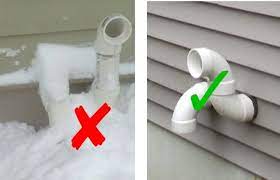Care of your septic system
May 16, 2021 Around The House

It’s easy to forget all about your septic system. It’s underground and out-of-sight, out-of-mind right?
It’s a pretty important component of any rural property so here are some tips to keep it running smoothly:
Use Water Efficiently
The average indoor water use in a typical single-family home is nearly 70 gallons per person, per day. Just a single leaky or running toilet can waste as much as 200 gallons of water every day. All of the water a household sends down its pipes winds up in its septic system — toilet, shower, dishwasher, washing machine. The more water a household conserves, the less water enters the septic system. Efficient water use improves the operation of a septic system and reduces the risk of failure.
High-efficiency toilets.
Toilet use accounts for 25 to 30 percent of household water use. Many older homes have toilets with 3.5- to 5-gallon reservoirs, while newer, high-efficiency toilets use 1.6 gallons of water or less per flush. Replacing existing toilets with high-efficiency models is an easy way to reduce the amount of household water entering your septic system.
Faucet aerators and high-efficiency showerheads.
Faucet aerators, high-efficiency showerheads, and shower flow restrictors help reduce water use and the volume of water entering your septic system.
Washing machines.
Washing small loads of laundry on your washing machine’s large-load cycle wastes water and energy. By selecting the proper load size, you will reduce water waste. If you are unable to select a load size, run only full loads of laundry. Try to spread washing machine use throughout the week. Doing all household laundry in one day might seem like a time-saver; but it can harm your septic system, not allow your septic tank enough time to treat waste, and could flood the weeping bed.
Clothes washers that bear the ENERGY STAR label use 35 percent less energy and 50 percent less water than standard models. Other Energy Star appliances provide significant energy and water savings.
Properly Dispose of Waste
Whether you flush it down the toilet, pour it down the sink, shower, or bath, everything that goes down your drains ends up in your septic system. What goes down the drain affects how well your septic system works. An easy rule of thumb: Do not flush anything besides human waste and toilet paper. Never flush:
Cooking grease or oil
Non-flushable wipes, such as baby wipes or other wet wipes
Photographic solutions
Feminine hygiene products
Condoms
Dental floss
Diapers
Cigarette butts
Coffee grounds
Cat litter
Paper towels
Pharmaceuticals
Household chemicals like gasoline, oil, pesticides, antifreeze, and paint or paint thinners
Don’t kill off important bacteria
Your septic system contains a collection of living organisms that digest and treat household waste. Pouring toxins down your drain can kill these organisms and harm your septic system. Whether you are at the kitchen sink, bathtub, or utility sink:
Avoid chemical drain openers for a clogged drain. Instead, use boiling water or a drain snake.
Use bleach very sparingly.
Never pour cooking oil or grease down the drain.
Never pour oil-based paints, solvents, or large volumes of toxic cleaners down the drain. Even latex paint waste should be minimized.
Eliminate or limit the use of a garbage disposal. This will significantly reduce the amount of fats, grease, and solids that enter your septic tank and ultimately clog its weeping bed.
Be kind to Your Weeping Bed
Your weeping bed—a component of your septic system that removes contaminants from the liquid that emerges from your septic tank—is an important part of your septic system. Here are a few things you should do to maintain it:
Parking: Never park or drive on your weeping bed or have heavy machinery drive over it.
Planting: Plant trees the appropriate distance from your weeping bed’s mantle to keep roots from growing into your septic system. A septic service professional can advise you of the proper distance, depending on your system and landscape.
Placing: Keep downspouts, sump pumps, and other rainwater drainage systems away from your weeping bed area. Excess water slows down or stops the wastewater treatment process. Ensure that your water treatment equipment backwashes into your sump pit or other gravity-fed drain and not your septic system.





